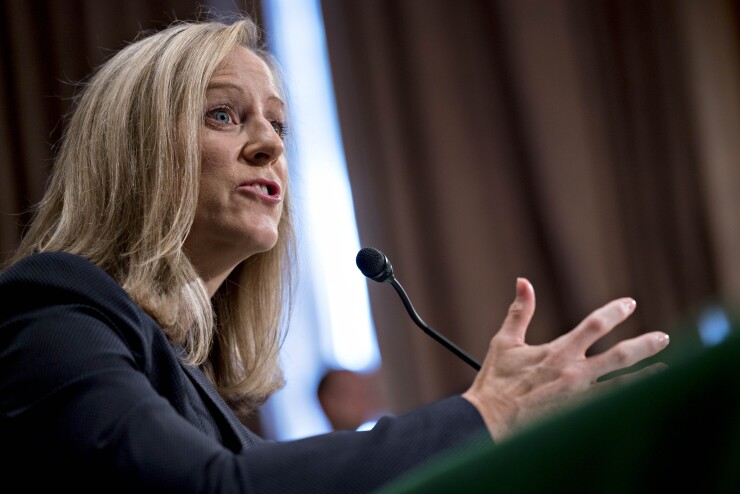The industry's worst fears about higher costs and less available credit stemming from the Consumer Financial Protection Bureau's mortgage rules have not materialized in the years since those regulations were written, the bureau said Thursday.
The CFPB on Thursday published its five-year "look-back" review of its ability-to-repay — also known as Qualified Mortgage — rule and a separate report on mortgage servicing rules that together created new standards in response to the mortgage crisis.
The CFPB found that the QM rule — issued under former CFPB Director Richard Cordray— had little impact on borrowers’ access to credit or pricing.
“At the aggregate market level, the Rule does not appear to have materially increased costs or prices,” the report said.

Rather, the bureau’s report reiterated what many in the industry at the time said about the mortgage market: Credit restrictions were driven by mortgage lenders’ desire to avoid litigation and other risks associated with the rule.
CFPB Director Kathy Kraninger wrote that the reports are “not the end of the line for the Bureau.”
“I am committed to assuring that the Bureau uses lessons drawn from the assessments to inform the Bureau’s approach to future rulemakings,” Kraninger wrote in an introduction.
The mortgage underwriting rule required that lenders verify a borrower's ability to repay a loan using eight specific underwriting standards. Ultrasafe loans that met the definition of QM were presumed to be in compliance with the ability-to-repay standard, and had protection from legal liability.
A key finding of the
Still, the QM rule did effectively eliminate loans with little to no documentation — known as “no doc" or "low doc” loans — that were popular in the run-up to the financial crisis of 2008.
The report found that the QM rule “did not impact access to credit for self-employed borrowers,” an issue that remains a point of contention with lenders today.
“Lenders may find it difficult to comply with Appendix Q relating to the documentation and calculation of income and debt,” the report found. However, approval rates for non-GSE-eligible self-employed borrowers fell only slightly, by 2 percentage points, the bureau said.
The report also found that the QM rule’s cap on points and fees cap had no effect on access to credit for borrowers seeking smaller loans largely because lenders handle such loans on a case-by-case basis.
“Lenders typically waive certain fees, with or without a compensating increase in the interest rate, to avoid exceeding the cap,” the report found. “Lenders denying a [loan] application to void exceeding the QM points and fee cap is rare.”
The CFPB’s report also examined the effect of the QM rule on lenders’ costs of originating loans and on the prices they charged to consumers.
Separately, the
However, the cost of servicing mortgage loans increased substantially between 2008 and 2013, the report found.
The estimated average annual cost of servicing loans in default jumped to between $2,000 and $2,400 from 2014 to 2017, from about $480 per loan in 2008.
The Dodd-Frank Act requires that the CFPB conduct a five-year assessment of major rules to determine their effectiveness and the impact on consumers’ access to credit. The reviews did not include a cost-benefit analysis though the CFPB said it is considering whether to conduct such analyses in the future.





